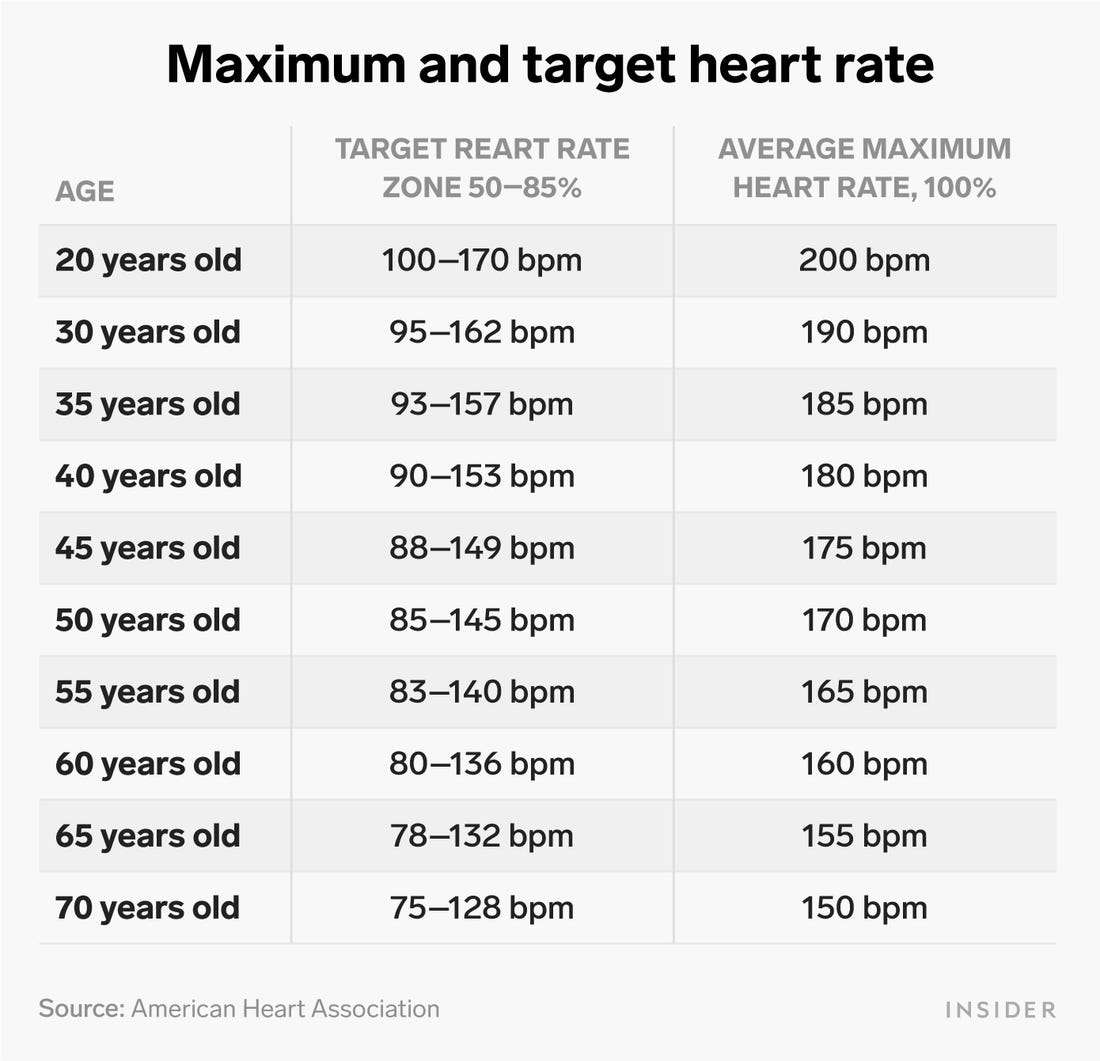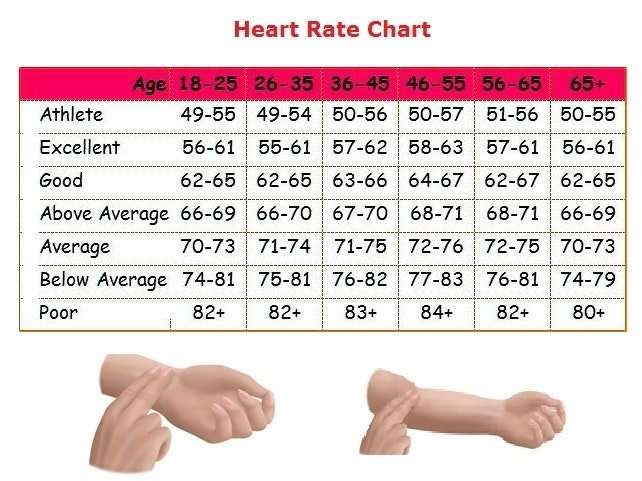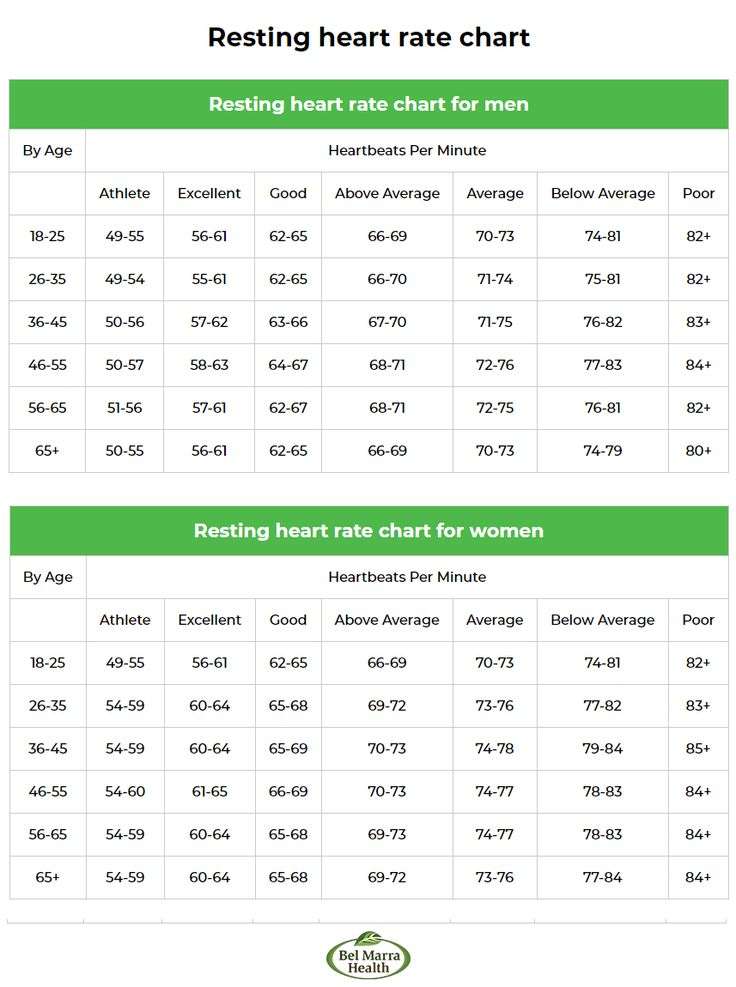How Do You Check Your Pulse
You can measure your heart rate manually by checking your pulse. Follow these three steps.
- Find your pulse in your wrist .
- Count each beat for a total time of 30 seconds.
- Double the number of beats you counted. This is your heart rate or pulse, measured in beats per minute.
Also make a note of whether your heart beats at an even or uneven rhythm. A normal heart beats at a steady rhythm like a clock, tick tock tick tock.
Some people like to use a heart rate monitor to measure their heart rate. These monitors are often included in fitness trackers, which are now widely available in sports stores and other retail outlets. However, their accuracy depends on the quality of the device.
Does Your Heart Have A Maximum Number Of Beats
The maximum number of lifetime heartbeats for humans is about 3 billion. But you wont die when you reach a set number of heartbeats. Heartbeats, however, are a marker of your metabolic rate. The faster your metabolic rate , the shorter your lifespan.
For example:
The total number of heartbeats per lifetime is amazingly similar across all mammals. For example, a mouse has; a heart rate of 500 to 600 beats per minute but lives less than two years. At the other extreme, a Galápagos tortoise has a heart rate of about six beats per minute and has a life expectancy of 177 years.
Do the math and the heart of a mouse beats 100 times faster than that of a tortoise. But a tortoise lives 100 times longer than a mouse. Humans, however, have about 60 bpm and have about 3 billion heartbeats per lifetime.
What’s A Normal Resting Heart Rate
For adults, a good resting heart rate varies from person to person and depends on various factors: whether you’re on medication, laying down or standing up, standing still or on-the-move, stressed or relaxed.;
While the average adult’s resting heart rate should range between 60 and 100 bpm, anything over 90 bpm is considered high. Generally speaking, lower heart rates are considered better as it means that the heart muscle doesn’t have to work as hard to keep a strong, steady rhythm.;
Research has shown that a higher resting heart rate is associated with an increased risk of cardiovascular diseases.;
If you’re worried about resting heart rate being consistently too high or too low, and you’re not sure why, it’s a good idea to consult with your doctor about what may be causing it.
Also Check: What Branch Of Medicine Deals With Heart Disease
Legs Up The Wall To Reduce Resting Heart Rate
The legs up the wall pose is a therapeutic yoga pose that helps your body and mind relax. To do the Viparita Karani pose:
Try to stay in this pose for 5 minutes. It doesnt need to be perfect. Even having your legs above your heart works if youre relaxed.
Viparita Karani improves circulation as gravity helps blood flow from your legs back to your heart. Because your heart doesnt need to work as hard, your heart rate lowers.
What Affects Resting Heart Rate

- Temperature: When temperature and humidity rise, your heart needs to pump more blood. Whereby your pulse may increase up to 5 to 10 bpm.
- Body position: Your pulse is usually the same when youre resting, whether youre sitting or standing. However, it may go up for a couple of minutes after you sit or stand.
- Emotions:;Being stressed, excited, or upset can raise your pulse.
- Body Size:;If youre obese your heart rate could be higher than average as your heart needs to work harder to circulate throughout your body.
- Medications: Drugs that block your adrenaline can slow your heart rate. Conversely, high doses of thyroid medication can raise it.
- Water: Being dehydrated raises your RHR .
- Type 2 Diabetes is associated with resting heart rate .
You May Like: How To Calculate Training Heart Rate
How To Lower Resting Heart Rate
Causes Of High Heart Rate Variability
A high HRV is known to be a sign of a healthy heart. Most of the studies have found that a higher HRV is associated with lowered morbidity and mortality and enhanced psychological well-being and good quality of life.
Often, the most common cause of high heart rate variability is due to the continuous low-grade stressors. These stressors in the short term lead to a higher HRV as the body is continuously making an effort to recover from the situation.
Read Also: Why Does Your Heart Rate Go Up When You Exercise
Maximum And Target Heart Rate For People Below 50
There is no definitive medical recommendations on when a resting heart rate is high, however a lot of medical specialists concur that a constant heart rate in the upper levels can put too much stress on the heart and other organs. If an individual has a high heart rate at rest and is experiencing other symptoms, doctors might analyze his or her heart function, Bauman said.
Knowing your heart rate during workout sessions can help understand whether you are doing too much or not enough, the AHA says. When individuals work out in their target heart zone, they acquire the most benefits and improve their hearts health. When your heart rate remains in the target zone you know you are pressing the muscle to obtain more powerful, Bauman said.
An individuals target heart rate zone is between 50;and 85 percent of his or her maximum heart rate, according to the AHA.
A lot of commonly, maximum heart rate is calculate by subtracting your age from 220:
220 Age. For a 30-year-old person, for example: 220 30 = 190.
The target zone for a 30-year-old individual would be between 50 and 85 percent of his/her maximum heart rate:
- 50 level: 190 x 0.50 = 95 bpm
- 85 percent level: 190 x 0.85 = 162 bpm
Help Your Heart Work Stronger
Cardiovascular exercise is especially effective in keeping your heart healthy and reaching your target heart rate. This specific type of exercise gets your heart beating fast for several minutes at a time.
Target heart rate is defined as the minimum number of heartbeats in a given amount of time in order to reach the level of exertion necessary for cardiovascular fitness, specific to a persons age, gender, or physical fitness.
The following is an estimate given by the American Heart Association for target heart rate numbers for adults ages 45 to 70:
- 45 years: 88 to 149 beats per minute
- 50 years: 85 to 145 beats per minute
- 55 years: 83 to 140 beats per minute
- 60 years: 80 to 136 beats per minute
- 65 years: 78 to 132 beats per minute
- 70 years: 75 to 128 beats per minute
Also Check: How To Get Heart Attack
How To Lower Your Heart Rate With Exercise
High-Intensity Interval Training is a training method where you give 100% effort in a quick, intense burst of exercise, followed by a short resting period. HIIT increases your maximum heart rate and lowers your RHR.
HIIT is as simple as doing one exercise, like sprinting, as fast as you can safely run for 30 seconds, then resting for 90 seconds.
Warm-up first and start with one rep.
Rest for several days in between HIIT days. Build up slowly to a workout of several reps that only takes about 15 minutes. Then try adding new exercises.
For the best results, dont set an arbitrary time. Instead, push yourself to your max. And then rest and recover until youre ready to give 100% again. For instance, give 100% effort for 15 seconds and rest for five minutes.
Learn more about the health benefits of HIIT and how to do it the right way in this short HIIT video from Thomas DeLauer.
Try These Balance Exercises:
- See how long you can stand on one foot, or try holding for 10 seconds on each side.
- Walk heel to toe for 20 steps. Steady yourself with a wall if you need a little extra support.
- Walk normally in as straight a line as you can.
- If you find standing on one foot very challenging at first, try this progression to improve your balance:
- Hold on to a wall or sturdy chair with both hands to support yourself.
- Next, hold on with only one hand.
- Then support yourself with only one finger.
- When you are steady on your feet, try balancing with no support at all.
Recommended Reading: Can This 10 Second Trick Prevent Your Heart Attack
How Much Do I Need
Balance exercises can be done every day or as many days as you like and as often as you like. Preferably, older adults at risk of falls should do balance training 3 or more days a week and do standardized exercises from a program demonstrated to reduce falls. Its not known whether different combinations of type, amount, or frequency of activity can reduce falls to a greater degree. If you think you might be at risk of falling, talk to your doctor.
Tai chi exercises also may help prevent falls. Balance, strength and flexibility exercises can be combined.
Children Have Higher Resting Heart Rates Than Adults

According to Purvi Parwani, MD, director of Women’s Heart Care at Loma Linda University International Heart Institute, children tend to have a higher resting heart rate than adults because of a faster metabolism. “For example, a newborn heart rate of 100 to 150 bpm is considered normal,” Parwani says.;
However, the average resting heart rate of a child also depends on age and activity level during the day. According to the US National Library of Medicine, the resting heart rate range for children changes every few years until around 10 years old:;
- Newborns 0 to 1 month old: 70 to 190 bpm;
- Infants 1 to 11 months old: 80 to 160 pm
- Children 1 to 2 years old: 80 to 130 bpm
- 3 to 4 years old: 80 to 120 bpm;
- 5 to 6 years old: 75 to 115 bpm;
- 7 to 9 years old: 70 to 100 bpm
- 10 years and older: 60 to 100 bpm
Also Check: Is Your Pulse And Heart Rate The Same Thing
Exercise And Resting Heart Rate
One study put participants through a 12-week aerobic conditioning program of cycling, Stairmaster, and running on a treadmill. Participants dropped their resting heart rate down from an average of 69 to 66, a 3 point drop. When they stopped the aerobic program, however, their resting heart rate went back to around 69 again.
It appears that you must continue exercising to keep your resting heart rate lower. What else can you do?
What Is Your Heart Rate
Your heart rate, or pulse, is the number of times your heart beats in 1 minute. Heart rates vary from person to person. Itâs lower when youâre at rest and higher when you exercise.
Knowing how to find your pulse can help you figure out your best exercise program. If youâre taking heart medications, recording your pulse daily and reporting the results to your doctor can help them learn whether your treatment is working.
Blood pressure vs. heart rate
Your heart rate is separate from your blood pressure. Thatâs the force of your blood against the walls of your blood vessels.
A faster pulse doesnât necessarily mean higher blood pressure. When your heart speeds up, like when you exercise, your blood vessels should expand to let more blood pass through.
You May Like: What Does A Slow Heart Rate Mean
What Does Heart Rate Measure Anyway
Heart rate measures how fast your heart is beating.
In the simplest of definitions, heart rate, or pulse, is the number of times your heart beats in a minute . It measures how intensely your heart is pumping and can therefore be used as a proxy for how hard youre working.
Measuring your heart rate during exercise is a key tool to help you understand how intense your workout is, says Tami Smith, an ACE-certified personal trainer. By measuring your heart rate, youre able to gauge your exertion more accurately. For example, you might think that youre working hard and to your max capacity, but your heart rate youre still in a low zone and can push a little harder.
Dont Miss: What Is A Good Heart Rate For Exercise
How To Manage Your Zone
Tachycardia is the medical term for an excessively fast heart rate. While a fast heart rate during rest may have a variety of causes, a fast heart rate during a workout may simply be the result of exercising at too difficult a level of intensity. Decreasing the intensity of your workout may help bring your heart rate back into the target zone. If youve found working out frustrating and defeating, it may be because youve been working to the wrong numbers.
Recommended Reading: How To Connect Heart Rate Monitor To Peloton App
Foods That Lower Resting Heart Rate
People in the Blue Zones, areas where people live longer than average, eat plenty of beans. One reason beans are so healthy is that they can help lower your pulse.
In one study, participants were given a cup a day of beans, chickpeas, or lentils. Participants lowered their resting heart rate from an average of 74.1 to 70.7, a 3.4 point drop. The change was similar to those in the other study who exercised for 250 hours!
You might consider eating beans regularly to keep your resting heart rate in a healthy range. Beans are also an excellent source of vegan protein.
What Is The Fat
Exercising in the fat-burning zone may not be the best way to lose weight.
On large fitness equipment and some fitness trackers, you might notice something called the fat-burning zone. The fat-burning zone often refers to zones 2 and 3, where you are working out at a lower to moderate intensity level. In this zone, your body is likely to burn proportionately more calories from fat than from carbohydrates, hence the name.
Does that mean that working out in this supposed fat-burning is the best way to go about losing weight? Not really. Losing weight is a matter of burning more total calories than you take in. At a higher heart rate, youll burn more calories overall , even if more of those calories come from carbs. If your goal is to lose weight, youre better off working at a higher heart rate to burn more calories than you are focusing on burning fat specifically.
You May Like: How To Calculate Training Heart Rate
Also Check: How Do You Calculate Heart Rate
What Are Heart Palpitations
A heart palpitation is when you suddenly become aware of your heart beating, usually in an irregular way. Sometimes you can feel it in your ears or your chest when youre lying down. Your heart beat may feel:
- too fast or slow
- like its fluttering
- like its thudding, or pounding.
It is not unusual to feel heart palpitations occasionally and mostly they are harmless. However if youre experiencing them on a regular basis, see your doctor.
Also Check: How To Calculate Resting Heart Rate
Where Is It And What Is A Normal Heart Rate

The best places to find your pulse are the:
- wrists
- side of your neck
- top of the foot
To get the most accurate reading, put your finger over your pulse and count the number of beats in 60 seconds.
Your resting heart rate is the heart pumping the lowest amount of blood you need because youre not exercising. If youre sitting or lying and youre calm, relaxed and arent ill, your heart rate is normally between 60 ;and 100 .
But a heart rate lower than 60 doesnt;necessarily signal a medical problem. It could be the result of taking a drug such as a beta blocker. A lower heart rate is also common for people who get a lot of physical activity or are very athletic. Active people often have a lower resting heart rate because their heart muscle is in better condition and doesnt need to work as hard to maintain a steady beat. A low or moderate amount of physical activity doesnt usually change the resting pulse much.;
Recommended Reading: How Do I Lower My Heart Rate
What Is A Normal Or Resting Heart Rate
There are three general ways to classify;heart rate, 1) normal, 2) fast and 3) slow.
- A resting heart rate is normal between 60-100 beats per minute.
- A resting heart rate is fast at greater than 100 beats per minute.
- A resting heart rate is slow at less than 60 beats per minute.
A resting heart rate predicts longevity and cardiovascular disease, and current evidence suggests that it is also an important marker of outcome in cardiovascular disease, including heart failure. A normal heart rate is generally stated to be between 60-100 beats per minute at rest . However, recent studies have suggested that an ideal resting heart rate is between 50-70 beats per minute. It is well-known that the average resting heart rate for well-trained athletes is between 40-60 beats per minute! A heart rate can change dramatically while sleeping or with daily activity and exercise. Usually, a heart rate will be slower during sleep, faster during daily activities or with exercise, and recover quickly back to a resting rate after exercise. This means your heart has appropriate heart rate variability and recovery, which is associated with good heart health. Your resting heart rate can also be used to estimate how much energy your body uses, or your basal metabolic rate.
